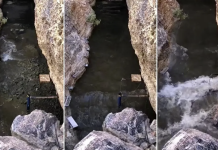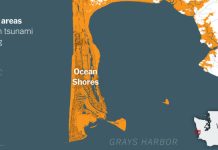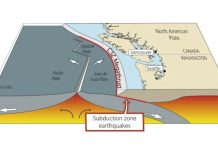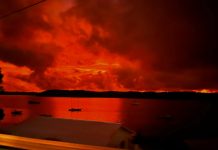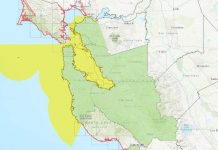The collapse of an unstable mountain slope in Alaska could trigger a catastrophic tsunami in Harriman Fjord, scientists warn.
Rolling through Prince William Sound, which is located some 60 miles (100 kilometers) from Anchorage, this massive wall of water would threaten potentially hundreds of people at one time.
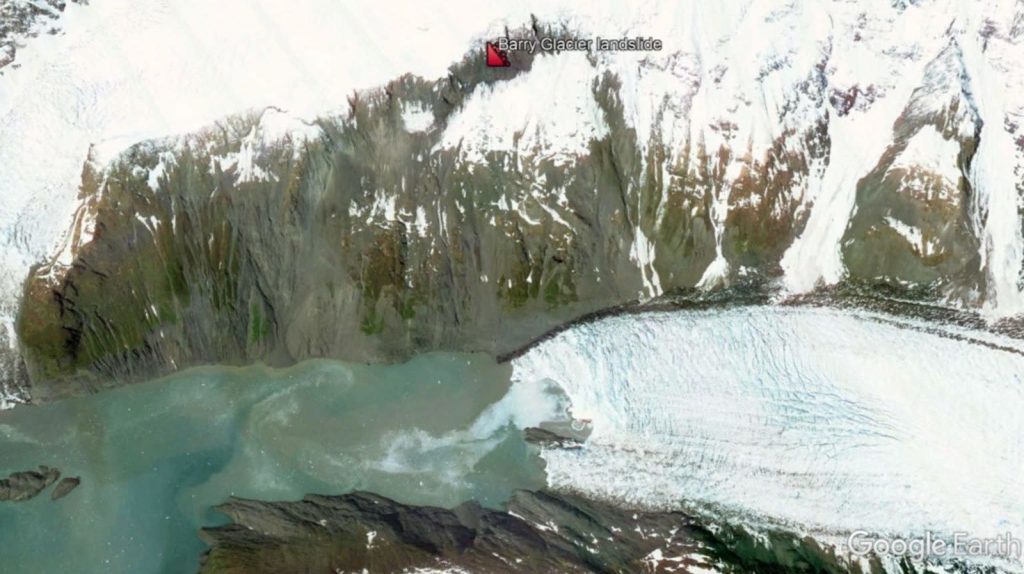
A sientific open letter describes an unstable mountain slope above the leading edge of the retreating Barry Glacier in Alaska.
Frighteningly, this pending landslide could spawn an enormous tsunami in Harriman Fjord, which is located some 60 miles (100 kilometers) from Anchorage.
Rolling through Prince William Sound, this massive wall of water would threaten “potentially hundreds of people at one time,” as the region is popular among tourists, fishers, and hunters.
Right now
The slope is currently creeping very slowly, but it could turn into a fast-moving landslide at virtually any moment.
Factors that could trigger a catastrophic collapse include earthquakes, significant rainfall, and lots of snow.
The ongoing retreat of Barry Glacier could also contribute to the timing of the imminent collapse.
Predicting precisely when this unstable slope might fail is not easy, but the scientists said this “landslide-generated tsunami will happen within the next year, and likely within 20 years.”
Importantly, large landslides are commonly “preceded by rockfalls and other signs of increasing instability,” wrote the authors.
The group’s findings are still preliminary and in need of peer review, but their computer models paint a grim picture:
“The effects would be especially severe near where the landslide enters the water at the head of Barry Arm. Additionally, areas of shallow water, or low-lying land near the shore, would be in danger even further from the source.
“A minor failure may not produce significant impacts beyond the inner parts of the fiord, while a complete failure could be destructive throughout Barry Arm, Harriman Fiord, and parts of Port Wells.
“Our initial results show complex impacts further from the landslide than Barry Arm, with over 30 foot waves [9 meters] in some distant bays, including Whittier. Field measurements and further analysis could allow us to make these estimates more accurate and specific.”
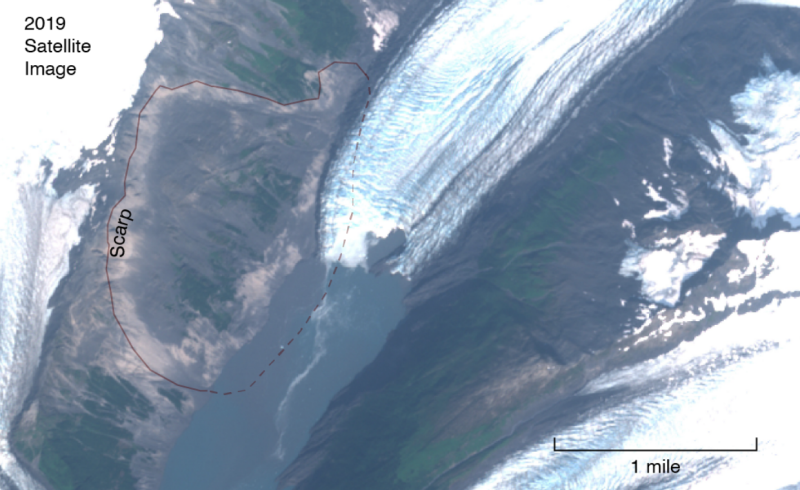
Alaska and landslide tsunamis
Alaska is no stranger to landslide-induced tsunamis. Only July 9, 1958, an earthquake triggered a landslide in Lituya Bay, releasing an estimated 40 million cubic yards (30 million cubic meters) of material.
The ensuing splash reached more than 1,700 feet (530 meters) in height. A gigantic wave then rolled through the fjord, knocking over trees and killing five people.
More recently, a 2015 landslide near Alaska’s Taan Glacier produced a 633 feet (193 meter) wave in Taan Fjord that smashed into the opposite wall of the glacial valley.
And in 2017, a landslide in Greenland produced a tsunami that roared into a small, isolated community.
The looming tsunami of Harriman Fjord
The looming tsunami in Harriman Fjord, however, would dwarf these previous examples.
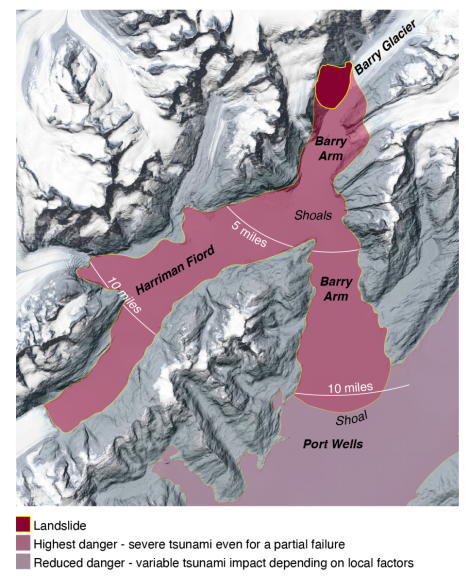
The scientists estimate a potential volume of collapsing material could be as high as 500 million cubic meters, and with a potential energy roughly 10 times greater than any of the previous events in Alaska.
This is several hundred times the volume of Hoover Dam.
“This is an enormous slope—the mass that could fail weighs over a billion tonnes,” said Petley. “The internal structure of that rock mass, which will determine whether it collapses, is very complex. At the moment we don’t know enough about it to be able to forecast its future behavior.”
The slope should be monitored, such as with GPS stations, which could signal a pending collapse. Geologists should conduct a more detailed investigation to understand the rock slope better, and a plan be put into place for managing the risks should the avalanche start to accelerate.
Thi highest tsunami on Earth has already occurred in Alaska… It was also triggered by a giant landslide following an earthquake. Is this going to happen again on a more dramatic scale? [Alaska.gov, Alaska.gov, Gizmodo]



